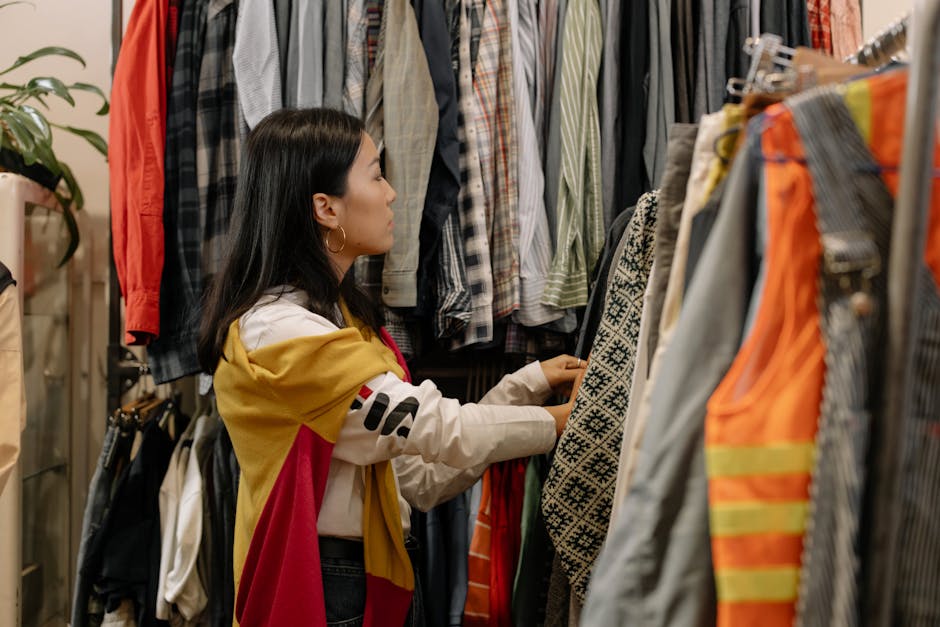The Resurgence of Recommerce: A Thrift Revolution in Retail

The Resurgence of Recommerce: A Thrift Revolution in Retail
In recent years, the retail landscape has witnessed a seismic shift towards sustainability and cost-efficiency, propelling the growth of the secondhand market. As economic pressures mount and consumer preferences evolve, platforms like ThredUp, Depop, and eBay are at the forefront of a burgeoning thrift revolution, reshaping the dynamics of global commerce.
Understanding the Thrift Boom
Market Growth: The global secondhand market is expected to balloon from $181.4 billion in 2024 to $202.98 billion in 2025, driven by an approximate CAGR of 11.9%. In the U.S. alone, the recommerce sector surpassed the $200 billion mark in 2024, with projections aiming for $292 billion by 2029. This explosive growth illustrates a clear shift in consumer behavior towards more sustainable and budget-friendly shopping options.
Record User Engagement: In response to recent changes in tariffs and economic policies, platforms like Depop and ThredUp have seen unprecedented surges in app downloads and user activity. This spike is primarily fueled by the new tariffs, with up to 145% on certain imports from China, making new goods significantly pricier and turning cost-conscious consumers towards secondhand options.
Competitive Dynamics and Consumer Behavior
The surge in secondhand shopping is not just a temporary trend but a significant shift in consumer behavior. Technological advancements in e-commerce have facilitated smoother peer-to-peer transactions, diversifying product offerings to include electronics, furniture, and luxury goods. Moreover, sustainability concerns particularly among millennials and Gen Z are influencing buying patterns, viewing secondhand purchases as environmentally responsible.
Operational Challenges: With growth comes the challenge of scalability. The secondhand market platforms are grappling with increased demand which stresses logistics, fulfillment, and inventory management. Moreover, the authenticity of products, especially in luxury and electronics segments, has become a crucial focus area to maintain consumer trust and minimize incidences of fraud.
"The future of retail lies not just in selling, but in fostering a sustainable cycle of buying and reusing, reshaping consumerism itself."
Strategic Imperatives and Forward-Looking Insights
As the market continues to expand, key strategies are imperative for sustaining growth. Strengthening authentication processes and integrating robust logistics solutions are at the core of these tactics. Additionally, platforms need to adapt quickly to regulatory changes, especially those related to tariffs and cross-border commerce.
Sustainability as a Driving Force: Moving forward, the emphasis on sustainability will not only attract consumers but will also serve as a crucial differentiating factor in the competitive landscape. Platforms that effectively communicate their impact on the circular economy will likely capture a significant share of the eco-conscious market segment.
Comparative Analysis: Traditional vs. Recommerce Retail
Unlike traditional retail, which relies heavily on the constant production of new goods, recommerce champions the reuse of items, thus extending the lifecycle of products and significantly reducing waste. The operational model of recommerce platforms leverages technology to facilitate user-to-user transactions, reducing the need for large physical retail spaces and inventory holdings, contrasting sharply with the traditional retail model.
Conclusion: The Road Ahead for Recommerce
The ongoing expansion of the secondhand market is more than just an economic trend; it is a cultural shift towards more responsible consumerism. As the market dynamics continue to evolve, the strategic importance of embracing recommerce can not be overstated. Companies that neglect this shift risk falling behind in an increasingly sustainability-focused world. For consumers, businesses, and the environment alike, the thriving secondhand market offers a pathway to a more sustainable and economically viable future.
